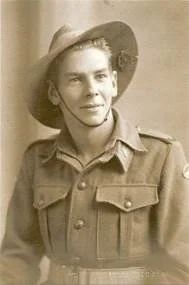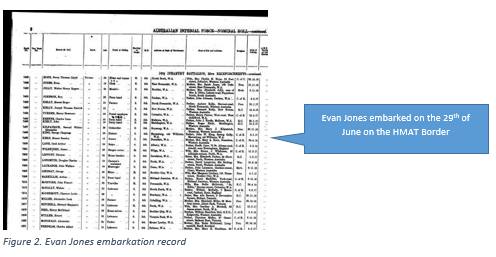Digger Investigation
Task: Research the experience of a South Australian ‘Digger’
The Anzac Spirit Prize provides the opportunity for young South Australians to examine and empathise with the remarkable sacrifices of South Australian service men and women during the 20th century.
Students will be judged on the quality of their response to the following aspects of the question above.
Part A: Digger investigation. 1000 words
Using a range of sources, research the experience of a South Australian service man or woman who served (Navy, Army, Airforce or Nursing) during World War 1.
Describe his/her background and life before departing for war. (2 marks)
Outline your Digger’s service during the War using evidence from the sources. (3 marks)
Describe a battle your Digger participated in during the War EG Gallipoli. (3 marks)
Either discuss the circumstances of the death of the service man or woman during the war, or if they survived the war, their life after the war. (2 marks)
Use a range of primary and secondary sources such as photographs, maps, artefacts, diary entries, books and archival materials and ensure that they are correctly cited in the list of references. (5 marks)
Part B; The Anzac Spirit. 500 words (Optional)
The Anzac Spirit is generally considered to be comprised of courage, perseverance, mateship and resourcefulness. Using evidence drawn from your research in Part A, choose two of the characteristics of the Anzac Spirit and describe how the Digger you researched demonstrated these two characteristics.
How to do the Digger Investigation
Plan for the Digger essay
Introduction
Where was you digger born?
Where did the / she live before enlisting?
What did he / she do for work?
Include a photo(s) of your digger
Enlistment
The date of enlistment (Enlistment document)
Unit that he / she joined ( Unit details)
Embarkation details including date departed and date arrived in Europe/ Middle east
First battle participation
A general summary of the battle
Details of the participation of the diggers unit in the battle. What did they do?
Diary entries would be useful here.
Did your digger receive injuries or citations?
Second battle participation
A general summary of the battle
Details of the participation of the diggers unit in the battle. What did they do?
Diary entries would be useful here.
Did your digger receive injuries or citations?
Death or return
Details of your soldiers death or return to Australia
Research: How to find a Digger
Use the following resources to research the background documents for your Digger.
Part 1. People Search
The first place to go is the People search
The People Search provides basic information about a soldier such as service number, rank, date of joining and other details.
Hint: You can filter your results to ensure that you only search WW1. Conflict: First World War 1914 - 1918
The original documents are often written using acronyms and terminology, this can be confusing.
Example: what is a 'O TNG BDE'?
The AWM has a glossary for terms that are difficult to understand when you are reading the original documents: Glossary - AWM
'O TNG BDE' is short for Overseas Training Brigade [First World War AIF Infantry Unit]
Research: The First World War Nominal Roll
The next place to go is the First World War Nominal Roll
This is an alphabetic list of about 324,000 members of the AIF who served overseas during the First World War. The Nominal Roll will tell you whether an individual returned to Australia (RTA), was killed in action (KIA), died of wounds (DOW) or was discharged. It will also give you the date when this occurred and the unit the person was attached to at the time. Ensure you use copies of these documents in your report
Research: When did your Digger embark for Europe?
For details of the embarkation date of your Digger, go to First World War Embarkation Roll
Embarkation means to board a ship for travel. The Embarkation Roll entry shows the date the soldier embarked, the name of the troopship on which they travelled and the date they boarded the ship. You can click on the link to view the digitised record to get more information including their age, occupation, where they lived, and who they named as their next of kin when they enlisted.
Ensure you use a copy of this document in your report
Research - where did your Digger serve?
The AWM has a service record for each Digger. A service record is a file kept by the military about a person during their military service. These records contain enlistment forms, a service and casualty form recording their movements between units, discharge documents, and sometimes letters and other correspondence.
You can check your Diggers service record at the AWM people search
Use the unit information to research the history of your Diggers unit.
Was your Digger wounded or killed?
If your Digger was wounded: Information about some Australian soldiers who were reported wounded or missing can be found at Red Cross Wounded and Missing files
If your Digger died, the Roll of Honour entries list the person’s date of death and the unit they were serving with at the time. In most cases the entries also include the place of death, cause of death, and the cemetery or memorial where they are buried or commemorated.
If your Digger died you can find the gravesite details at: The Office of Australian War Graves - dva.gov.au or The Commonwealth War Graves Commission - CWGC.org
Did your Digger win an award or medal?
To check if your Digger was decorated: A list of people who were awarded medals other than general campaign medals can be found at Honours and Awards database
Research - War diaries
War diaries are an excellent historical source.
For detailed information about what a unit was doing while your digger served, you can look at the war diaries. These records were kept by the commanding officer of a unit to record daily activities and locations. The diaries for every regiment that served in WW1 Can be found here:
You can then examine relevant Diary entries, ensure you use examples to illustrate your discussion, like this diary entry with a supplies list.








